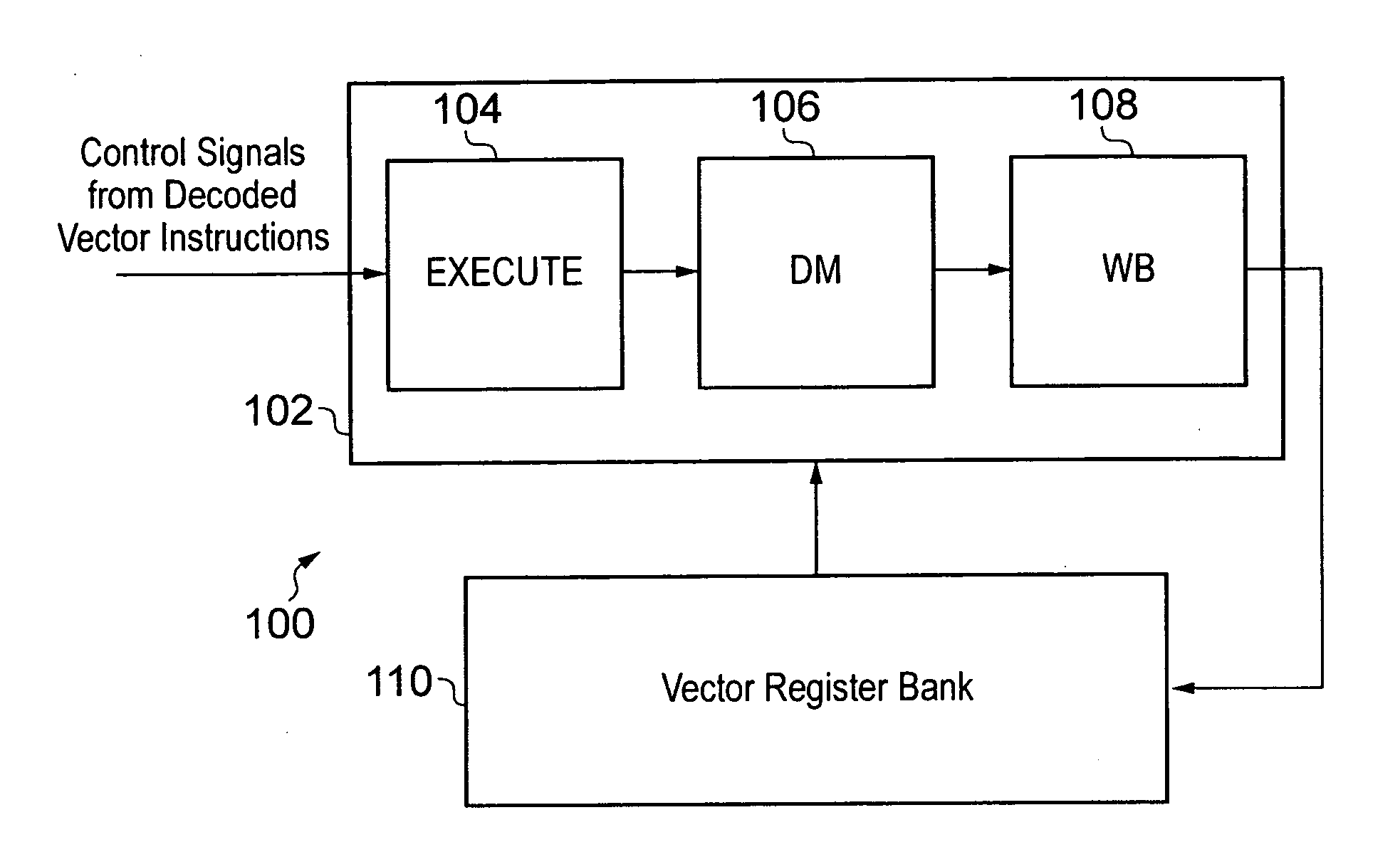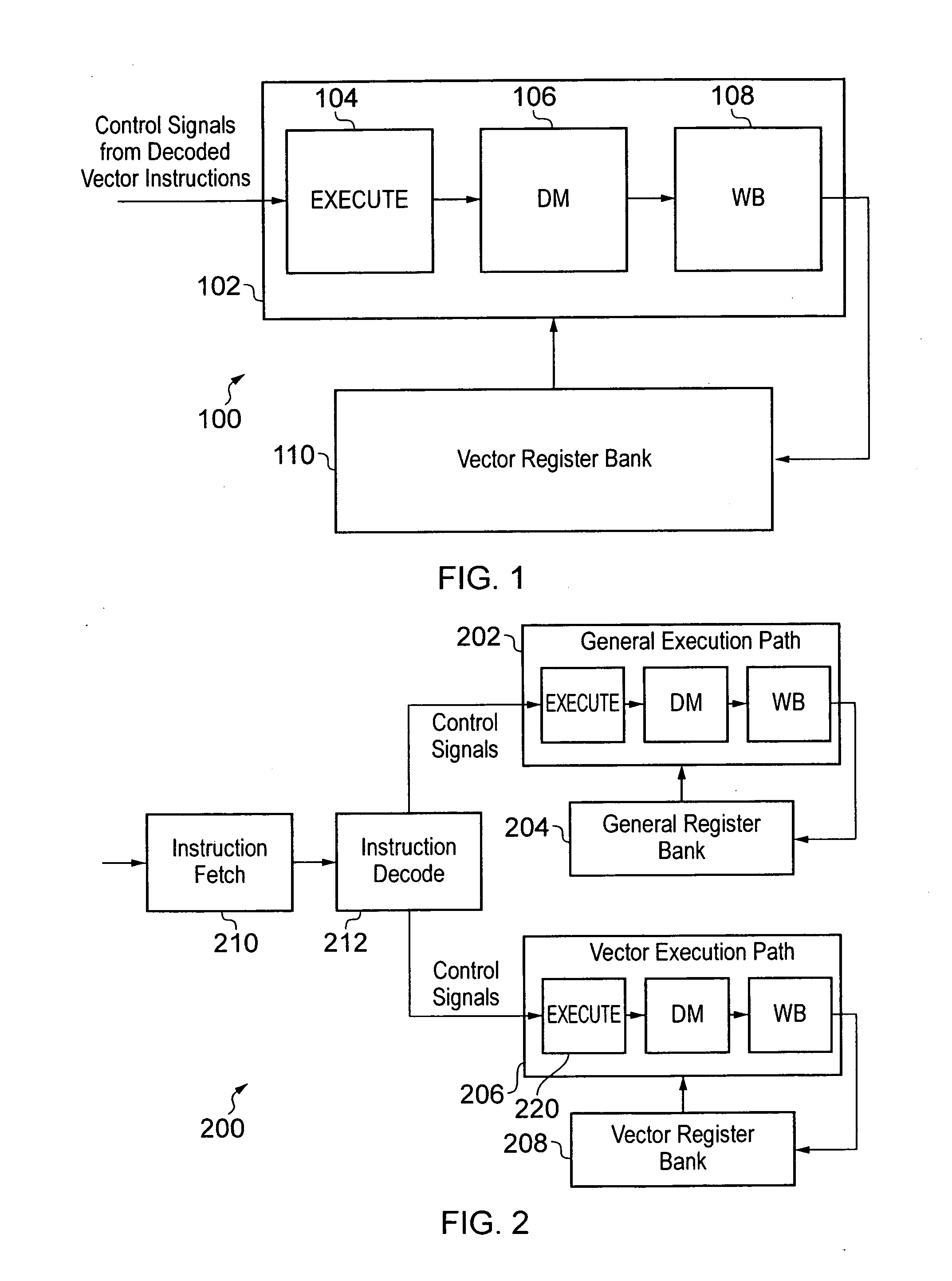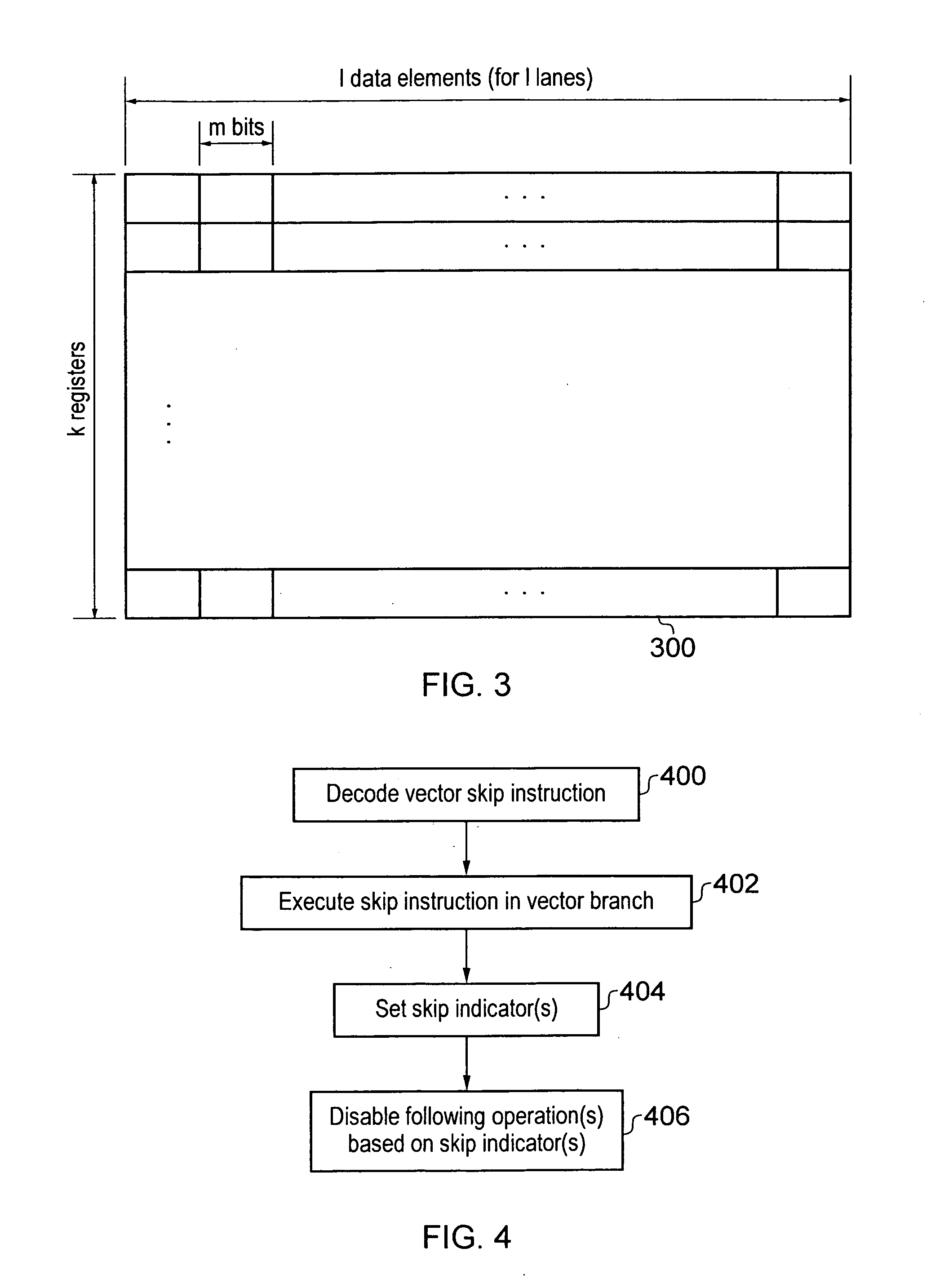Data processing apparatus and method for handling vector instructions
a data processing apparatus and vector instruction technology, applied in the field of data processing apparatus and method for handling vector instructions, can solve the problem of significant increase in the size of such instructions, and achieve the effect of complex nesting of skip functions
- Summary
- Abstract
- Description
- Claims
- Application Information
AI Technical Summary
Benefits of technology
Problems solved by technology
Method used
Image
Examples
Embodiment Construction
[0053]FIG. 1 schematically illustrates at least a part of a processor 100 according to an embodiment. The processor 100 comprises a dedicated vector processing unit (also referred to herein as a vector execution unit) 102 to which the control signals from decoded vector instructions are fed. The processor 100 is preferably a pipelined processor, where the dedicated vector execution unit 102 can comprise stages for arithmetic logical operations 104, data memory access 106, and register write back 108. Associated with the dedicated vector execution unit 102, there is provided a vector register bank 110 comprising a first number k of vector registers each comprising a second number 1 of data elements where each data element has a third number m of bits, for example as illustrated in FIG. 3. The vector processing unit comprises a plurality of lanes of parallel processing, and in one embodiment, when executing a vector instruction specifying one or more input vector registers, each lane ...
PUM
 Login to View More
Login to View More Abstract
Description
Claims
Application Information
 Login to View More
Login to View More - R&D
- Intellectual Property
- Life Sciences
- Materials
- Tech Scout
- Unparalleled Data Quality
- Higher Quality Content
- 60% Fewer Hallucinations
Browse by: Latest US Patents, China's latest patents, Technical Efficacy Thesaurus, Application Domain, Technology Topic, Popular Technical Reports.
© 2025 PatSnap. All rights reserved.Legal|Privacy policy|Modern Slavery Act Transparency Statement|Sitemap|About US| Contact US: help@patsnap.com



